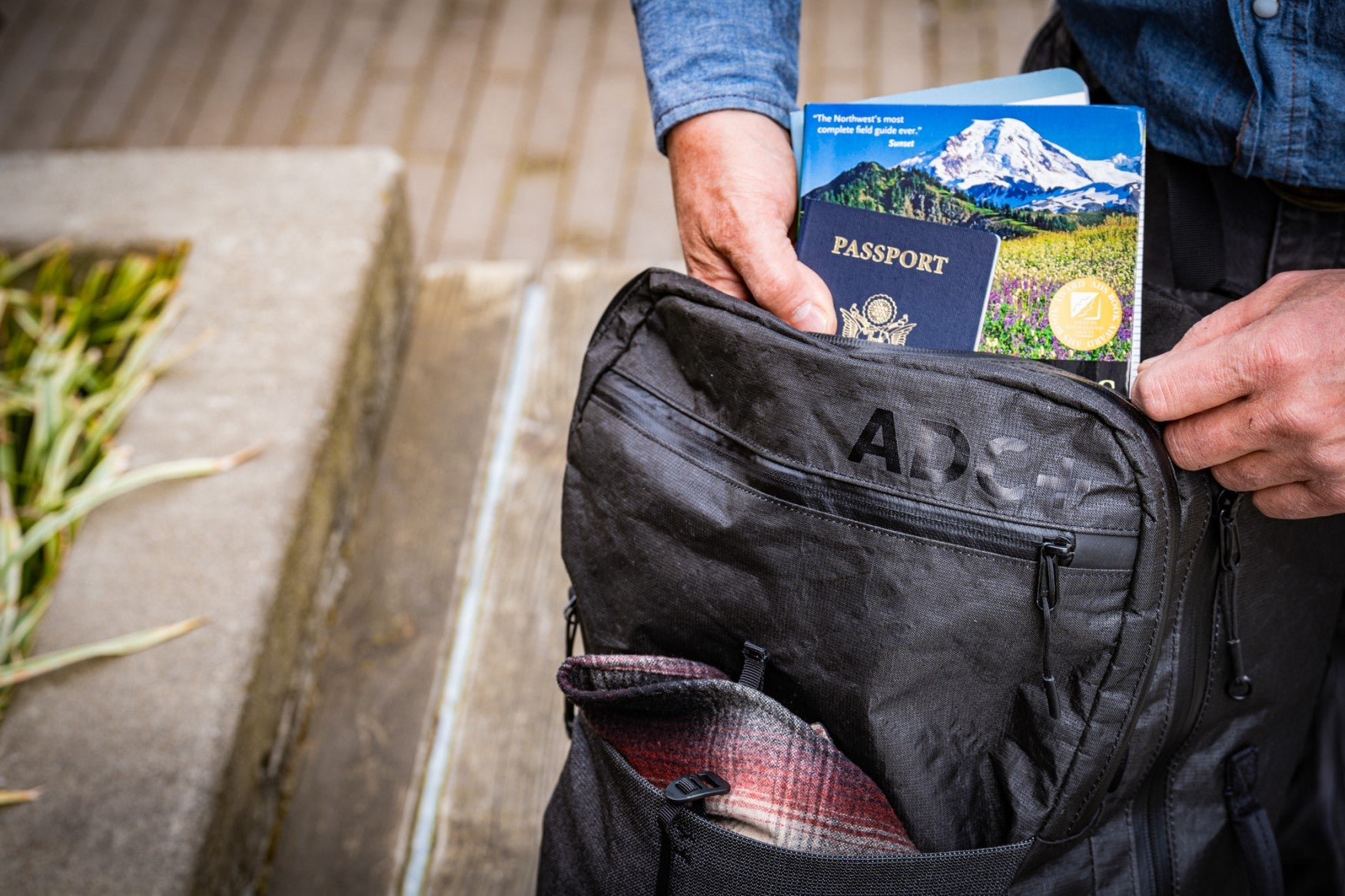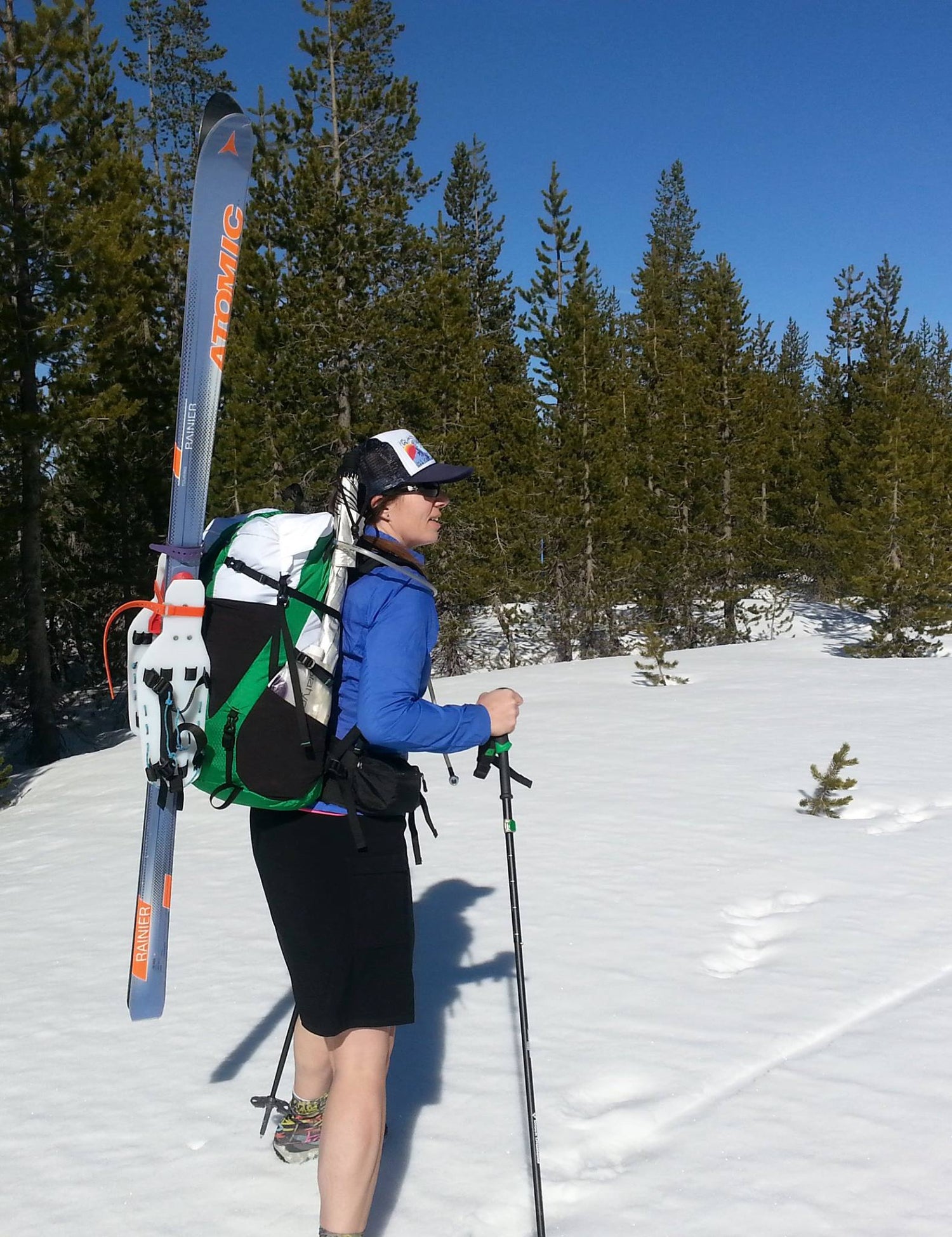
As avid backpackers and hikers, we spend countless days, months, even years of our lives outside. Sleeping under trees, swimming in creeks and lakes, cresting saddles and summiting mountains…it is no understatement that significant portions of our lives are spent away from walls, canned air, and artificial light. That extensive time outside can give you a different perspective on what makes a rewarding and fulfilling life. I often hear, “thru-hiking ruins you for normal life.” Spending five months watching your body transform into a hiking machine at the same time watching the ecosystems change again and again is certainly transformative, and I’m not just talking about the transformation of your calves.
All this time spent in nature works on you…in you. Instead of placing a majority of your self-worth in a 9-5 job and quest for accumulating more things and stuff, we start to value the places our legs can take us, and the determination it took to get up on day 145 to keep hiking and see what’s over that next ridgeline.

So much love for trails...and now the ground beneath
The mountains, rivers, and sunsets did infiltrate my desire to live a “normal life,” but I hadn’t spent much time thinking about the land: the forests and deserts, and bodies of water that make epic treks across the United States possible for dirtbags like me and my friends.
It was after completing the triple crown and a bunch of other trails; after about 10,000 miles hiked and at least 500 days sleeping outside, that I started working for a conservation organization and began paying attention to the land and the people that make our long trails possible. Ok, those things were written into my job description, that’s true, but I was a bit embarrassed that it took a job description to get me thinking about these issues. I had the great fortune to start working to establish the 750-mile Oregon Desert Trail (ODT) for the Oregon Natural Desert Association. My role would be to engage the long-distance hiker in knowing the eastern Oregon landscape in a deeper way during and after their hike through the sagebrush sea; to create opportunities for them to see value in the land and intact habitats enough to join the organization in our work to protect, defend and restore the land they were walking on.

She-ra has her dream job to connect hikers to the conservation issues through the Oregon Desert Trail.
And that’s when I realized I already had a relationship with the land, I felt like the out-of-doors was an extension of the indoors, I knew that the health of the landscape that I walked directly supported the life I wanted to live, but I hadn’t spent any energy thinking about our system of public lands, the land managers out there who are charged with the health and vitality of those places, and the countless organizations and people who live and breath trying to defend our trails and landscapes from degradation, exploitation, destruction and more.
That’s when I got excited to help other hikers engage with our trails, routes, and landscapes in a deeper way. Just who are the local, state, and federal agencies that say what can and can’t happen in these places? Just what do these designations mean when I see a sign on the tree that says “Wilderness Study Area” or “Area of Critical Environmental Concern?” What makes these places special, and how are they different from the next area I will hike through tomorrow? What are the threats to these places, the animals, water, and even the views? And what can I do if I want to get involved?
There is so much to it all. And in Oregon where I’m working on the Oregon Desert Trail, most of the land east of the Cascade Mountains (and Pacific Crest Trail) are public, that means those lands are owned by you and me.
It’s time to start paying attention because as it turns out, there are threats, very real threats to our ability to hike on a long trail and trust that the water in the creek is clean enough to drink. That the animals we enjoy watching along the trail have the habitat they need to survive and thrive. That the people whose job it is to make decisions about what’s best for these places have the money, resources, and our support to do so.
Ask yourself: What is your relationship to the land? Let's just start with the land underneath your favorite local trail. Who owns it, who manages it, what is it managed for, who are the animals and plants that live there; are any endangered? From what? Is there something you can do if you want to have a say in how this place makes it into the next decade? I bet there is. And then try it out on the next long trail you want to hike. What are the issues there? It’s enlightening, and I’ll admit a bit frightening, to look underneath the hood of your next long-distance trail, but I bet the trail organizations who are tasked with its management and development would be happy to engage you in some of the issues.

She-ra on the PCT. Confused, what does it mean?
Whether we like it or not our chosen life (yes, I’ll say life, because it’s a life-long goal of mine and many of my friends to hike ALL THE TRAILS), is not guaranteed, and if we don’t get involved in what makes these trails possible, who will?
My relationship with the land is evolving; it excites and scares me, but thru-hiking has ruined me for normal life. I want to keep hiking, and I wouldn’t have it any other way.











Leave a comment
This site is protected by hCaptcha and the hCaptcha Privacy Policy and Terms of Service apply.